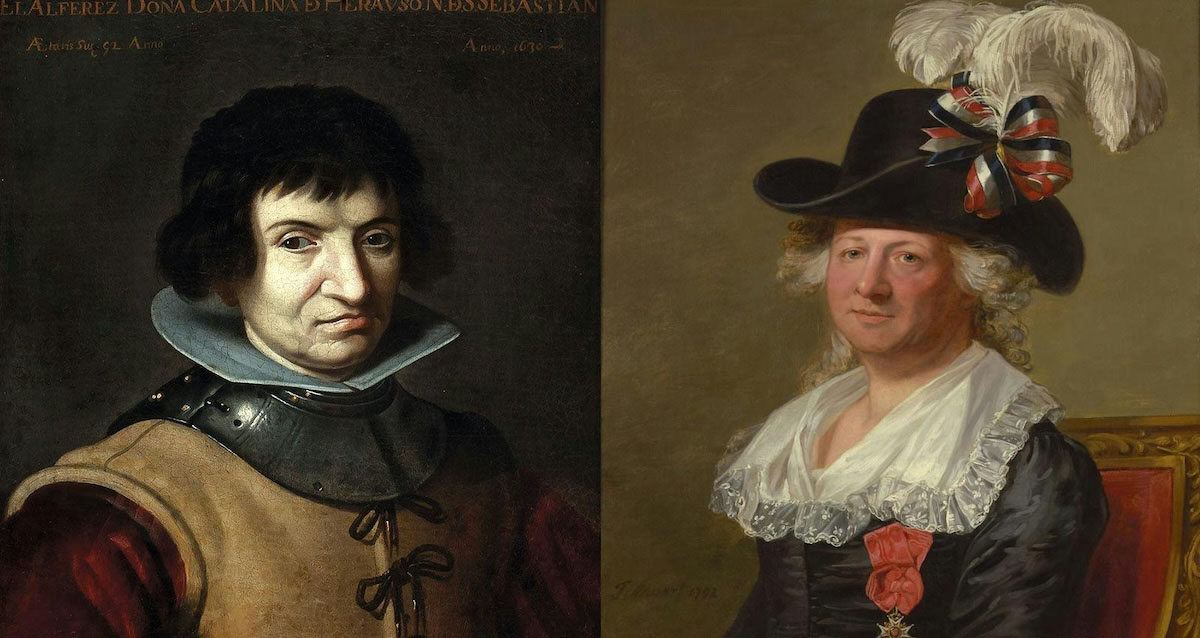Portraits reveal insight into gender-ambiguous luminaries of early modern Europe

LAWRENCE — The continual attention on the transgender community implies this is a modern cultural issue. But as a new article attests, transgender individuals have been around for centuries.
“Part of what I’m interested in seeing is how the concept itself is used through human history,” said Marta Vicente, professor of history and of women, gender & sexuality studies at the University of Kansas.
Her article “Trans Visual Narratives: Representing Gender and Nature in Early Modern Europe” studies the portraits of two renowned gender-ambiguous individuals: the 17th century Spanish soldier Antonio/Catalina de Erauso and 18th century French diplomat the Chevalier d’Eon. Their paintings appear as part of the artistic and scientific explorations that negotiated changing concepts of nature during this period.

The research appears in the Journal of Women’s History.
She chose to focus on these two particular personalities because of their many similarities.
“They both came from nobility. They were both wealthy. But their real connection was they were early modern celebrities. People knew them everywhere. People would even imitate them. This gives us a privileged angle to examine gender ambiguity in a way we couldn’t do with ordinary people,” she said.
One notable contrast was d’Eon dwelled in France and England, whereas Erauso resided in the Spanish world.
“Because historians tend to still be very geographically based, if you study Spain or Latin America, you don’t study anything else. Bringing them together taught me how there are some gender perspectives in the early modern world that are if not universal then at least characteristic of western societies,” she said.
Vicente addresses a key question that reverberated throughout both of her subjects’ societies: “Do we see them as part of nature’s diversity or nature’s monstrosity?”
“In the early modern period — and I think it’s still true now — people were interested in those who did not fit the expected gender because they were sort of ‘troubling nature,’” she said. “How the human being fits within the natural world is a curiosity that people have always had. And ambiguous gender makes people question the predictability of nature and the order of things.”
She revealed why Erauso and d’Eon were careful in trying to portray themselves as a wonder of nature.
“Otherwise there can be consequences, as in criminal cases or Inquisition trials. If a trans person is condemned of crimes like sodomy, suddenly, the wonder of nature becomes a monstrosity. Then it’s perceived as a sin against nature,” she said.
The professor chose to refer to both subjects by the pronoun “they,” even though that was not the contemporary method in their respective eras.
“Pronouns are important now because they are a verbal translation of gender. They serve as a bridge that translates gender for us. Pronouns are anchors of identity,” she said.
“But it’s funny because Erauso spoke Basque, which has no pronouns. Yet in Spanish there are. So the ambiguity of language is reflected in this.”
How would she envision a meeting between Erauso and d’Eon?
“Oh, they would probably hate each other,” she said, laughing.
“Chevalier d’Eon was a quintessential feminist. An avant-garde by all means. They wrote an entire essay on the genealogy of women in theology. They wanted women to be ordained as priests. But Erauso, as portrayed in their autobiography, is the quintessential misogynist: a macho, masculine soldier. Women are subhuman to Erauso. They could not have been in the same room for more than five seconds.”
A native of Barcelona, Vicente is the author of “Debating Sex and Gender in Eighteenth-Century Spain” (Cambridge, 2017) and of the articles “Rethinking Identity: Transgender Studies and Catalan Independence” and “Transgender: A Useful Category? Or, How the Historical Study of ‘Transsexual’ and ‘Transvestite’ Can Help Us Rethink ‘Transgender’ as a Category.” Her expertise focuses on queer studies, queer theory, feminist history and sexuality.
“‘Trans Visual Narratives’ offers yet another layer to the complexities of the construction of gender from a historical perspective and therefore also for us today,” Vicente said. “Through these two individuals, we can see what may have been very normal for a lot of people in early modern Europe who were not fitting into the gender that they were assigned at birth.”